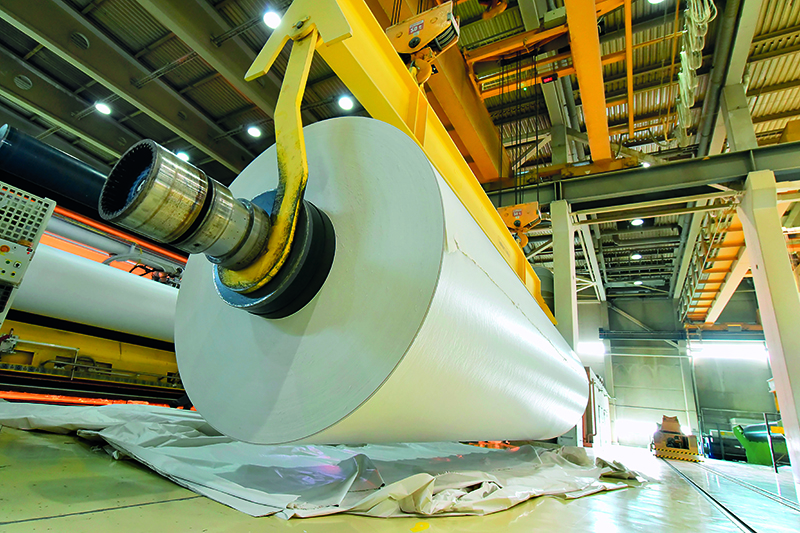Free trade deal could boost African manufacturing
Kouassi Yeboua, Researcher
Requier Wait, Senior Researcher
African Futures and Innovation, ISS Pretoria
The future of Africa will depend on its ability to use the industrialisation opportunity presented by the AfCFTA.
Industrialization has become one of the most talked about issues among African policymakers. A vibrant manufacturing sector is crucial to transforming economies on the continent, achieving sustained growth, creating more jobs and achieving prosperity for all.
Yet Africa’s experience with industrialization has been disappointing. Trade liberalization and appropriate complementary policies could turn things around. The African Continental Free Trade Area (AfCFTA) presents an opportunity for economic growth and transformation across the continent. To get there though, several major hurdles in implementing the new deal will need to be overcome.
After independence, most African countries tried to industrialize through state-led import substitution policies. These endeavors failed due to poor leadership, a lack of commitment, mismanagement, commodity price busts and an absence of clear industrial development planning.
Research by Bruton shows the extent to which these efforts were implemented on an ad hoc basis, lacking a clear economic rationale. Subsequent structural adjustment programs seem to have further dampened the ideal of industrialization in many African countries. They encouraged states to focus on what they already had an ‘advantage’ in – often commodities.
There is considerable room to grow intra-African manufactured exports if trade is further liberalized
Today Africa is less industrialized than it was in the 1970s. The share of the manufacturing sector in Africa’s GDP is currently 11%, down from 15% in the 1970s. Africa’s contribution to global manufacturing output declined from 3% in the 1970s to less than 2% in 2013. The share of manufacturing in Africa’s total exports fell from 26% in 1995 to 19% in 2014. In other words, African countries are deindustrializing while still poor.
Almost without exception, those countries that have sustained rapid economic growth over time, including the Asian Tigers and China, did so on the basis of a strong manufacturing sector. It seems unlikely that African countries could achieve inclusive and sustainable structural change without industrialization.
Given Africa’s significant agricultural potential, agro-processing could be a start to achieving a vibrant manufacturing sector. However, the continent’s exports to developed countries face more pronounced tariff regimes in processed agricultural products, with higher tariffs on processed commodities than on raw materials. This ‘tariff escalation’ discourages countries from moving up the value chain.
In 2014, manufactured products accounted for only 15% of Africa’s exports to outside the continent compared to 42% for intra-African exports. Evidence suggests that there is considerable room to grow intra-African manufactured exports if trade is further liberalized.
The AfCFTA aims to boost intra-African trade by reducing tariff and non-tariff barriers. Its full implementation will help mitigate the constraint of tariff escalation, encouraging countries to focus on more value-added products, and hence diversify exports away from commodities.
Technical barriers to trade, such as corruption and cumbersome custom systems must be removed
Implementation starts in January 2021 and if fully realized, the deal will help firms overcome the constraint of narrow domestic markets and facilitate economies of scale, diversification and more value add. AfCFTA covers all African countries, with an estimated combined GDP of US$2.5 trillion and a population of about 1.3 billion.
The trade deal will help attract foreign direct investment, especially in the manufacturing sector, as the large market can increase profit margins for external investors. By establishing a subsidiary on the continent rather than exporting from outside Africa, the unified African market can be accessed more easily and at lower costs.
The AfCFTA offers an opportunity to boost industrialization across Africa. It offers numerous manufacturing opportunities such as agro-processing, clothing, car assembling, machinery and equipment, among others.
However, its implementation will undoubtedly pose serious challenges. Regional economic communities such as the Economic Community of West African States (ECOWAS) and the Southern African Development Community aren’t functioning as they should. Intra-regional trade in ECOWAS is officially reported to be only 8–13% of total ECOWAS trade, and Nigeria recently closed its land border with Benin.
African governments and policymakers must do everything in their power to make the free trade area work. Technical barriers to trade, such as corruption and inefficient and cumbersome custom systems, have to be addressed.
Ethiopia is aligning its trade and industrial policies by developing economic zones and industrial hubs
The AfCFTA will probably be hampered by Africa’s huge infrastructure deficit and low quality of trade logistics. African countries should actively invest in both areas. Also, trade liberalization often creates winners and losers, especially when it takes place between countries with different levels of development. This could undermine the free trade area if compensatory measures aren’t taken for equitable distribution of gains.
Even fully implemented, the trade deal may not lead to the level of industrialization expected unless appropriate complementary policies are put in place. Industrial parks and special economic zones are a good platform to exploit these opportunities.
Lessons can be learnt from Ethiopia which is doing well in aligning its trade and industrial policies through developing economic zones and industrial hubs. The country is focusing on investments and production in manufacturing export sectors such as textiles and apparel, leather products, pharmaceuticals and agro-processing.
African countries should also invest in human capital, improve business regulations and enhance access to credit for export-oriented manufacturing firms. Such supportive policies, along with the effective implementation of the AfCFTA, can boost industrialization and development on the continent.
The future of Africa will depend on its ability to use the industrialization opportunity presented by the free trade area. Leaders now need to show the political will and commitment to ensure that technical trade barriers are removed and that industrial policies are in place and coordinated at both national and regional levels.
Original article published by ISS Today
(https://issafrica.org/iss-today)
